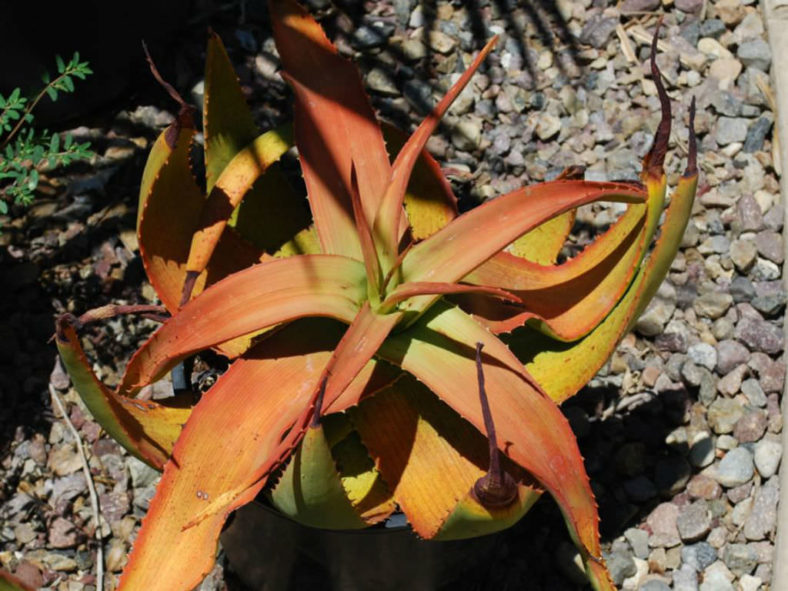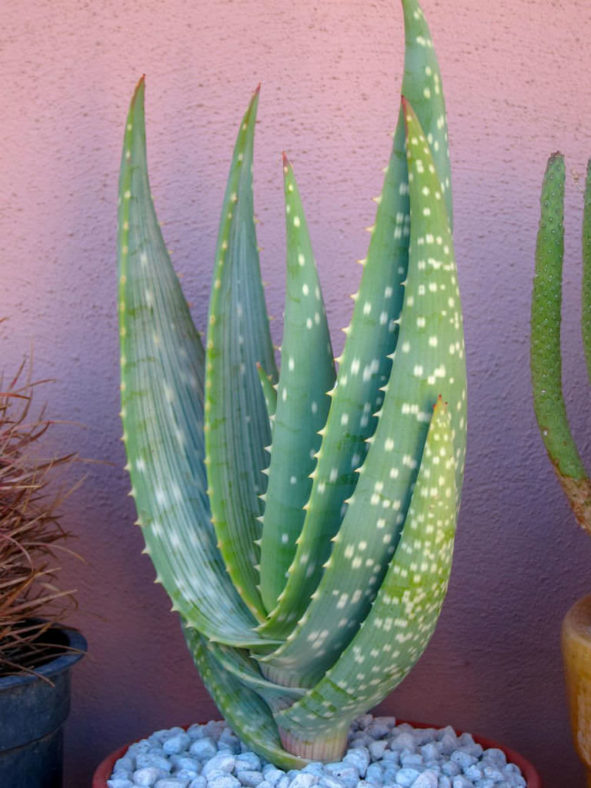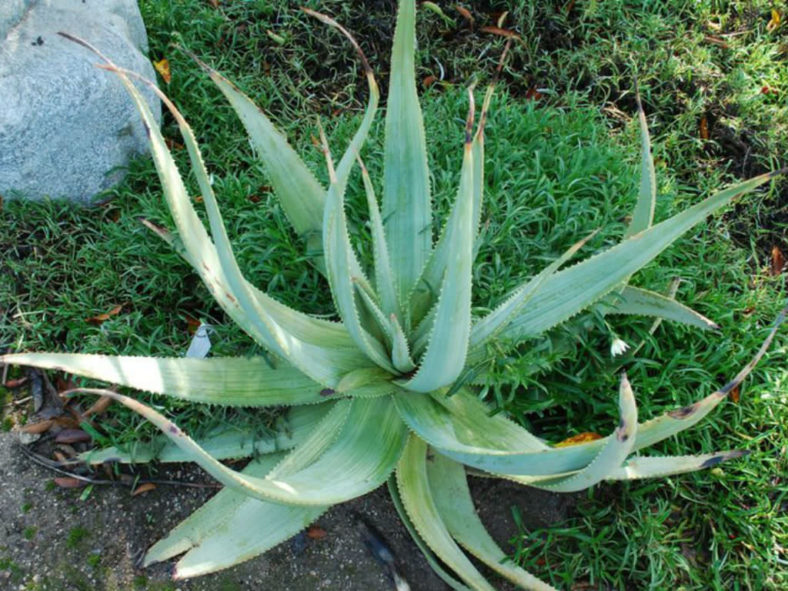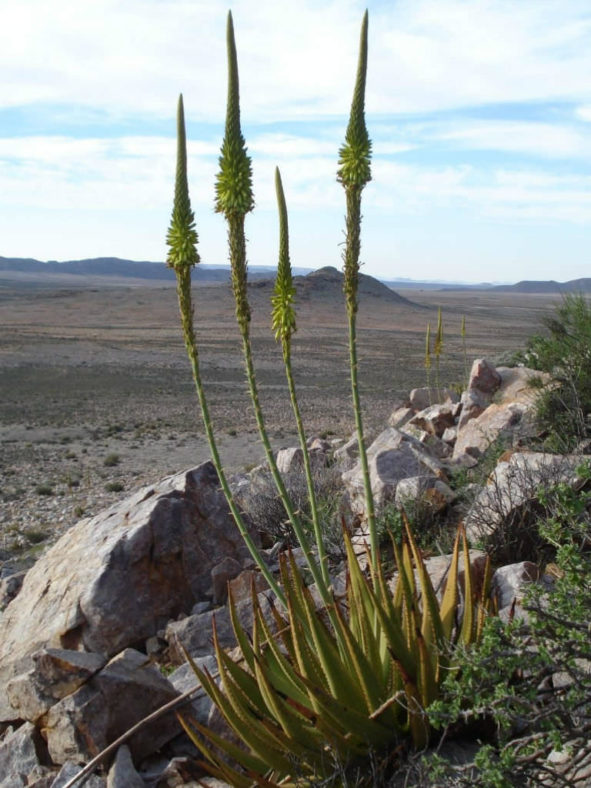Scientific Name
Aloe gariepensis Pillans
Common Name(s)
Gariep Aloe, Gariep River Aloe, Orange River Aloe
Synonym(s)
Aloe gariusana
Scientific Classification
Family: Asphodelaceae
Subfamily: Asphodeloideae
Genus: Aloe
Etymology
The specific epithet "gariepensis (gar-ee-ep-EN-sis)" refers to the restricted distribution of the species on both sides of the Orange River, also known as the Gariep River.
Origin
Aloe gariepensis is native to South Africa and Namibia.
Description
Aloe gariepensis is a succulent that forms stemless or short-stemmed, usually solitary rosettes of narrow, upcurved leaves with reddish triangular teeth along the margins. It can grow up to 3.3 feet (1 m) tall. The leaves are pale green to reddish-brown with or without elongated white spots in young plants and striped with parallel longitudinal lines in older specimens. They can measure up to 20 inches (50 cm) long and 3.6 inches (9 cm) wide.
The tubular flowers appear in erect racemes from mid-winter to early spring. The racemes are usually yellow to greenish-yellow, sometimes reddish or bicolored, and can reach up to 4 feet (1.2 m) in height.

How to Grow and Care for Aloe gariepensis
Light: When growing Aloes indoors, place your plants near a southern or southwest-facing window with plenty of bright, indirect light. Outdoors provide light shade, especially during the hottest parts of the day.
Soil: Plant Aloes in well-drained soil specially formulated for cacti and other succulents, or make your soil mix. Drainage is essential because too much moisture around roots can cause root rot.
Hardiness: Aloe gariepensis can withstand temperatures as low as 25 to 50 °F (-3.9 to 10 °C), USDA hardiness zones 9b to 11b.
Watering: These succulents need regular watering but are very tolerant of drought conditions for short periods. Water deeply, but only when the soil is dry. Cut back on watering during the winter months.
Fertilizing: Aloes generally do not require fertilizer but may benefit from the extra nutrients.
Repotting: These plants are not particularly fast-growing and will only rarely need repotting. Repot them in the spring in a container a few inches larger in diameter every few years to keep them from becoming rootbound.
Propagation: Propagating Aloe can be done by offsets, cuttings, or seeds from a mature plant.
Learn more at How to Grow and Care for Aloe.
Toxicity of Aloe gariepensis
Aloe gariepensis is not listed as toxic for people and pets.
Links
- Back to genus Aloe
- Succupedia: Browse succulents by Scientific Name, Common Name, Genus, Family, USDA Hardiness Zone, Origin, or cacti by Genus
Photo Gallery
Click on a photo to see a larger version.



